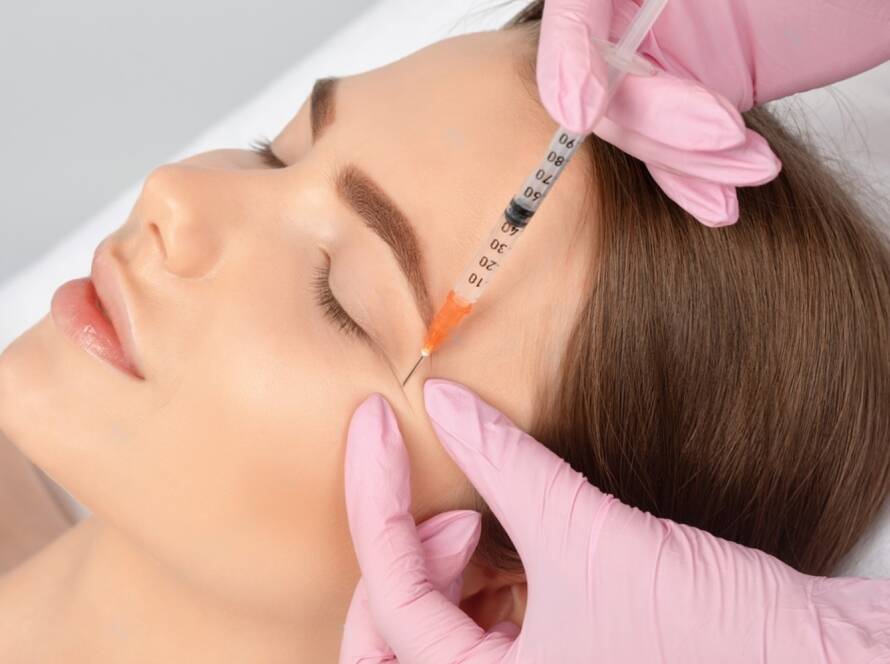As each year passes, when age starts to slow down, taking more interest in skin rejuvenation and treatments for skin resurfacing is normal.
Laser resurfacing is an exciting new development that will increase skin texture, tone, and appearance. In this regard, Fractional Carbon dioxide (CO2) and Fractional Erbium lasers are frequently used to treat skin imperfections and Resurfacing.
Although both laser-based ablative treatments efficiently solve issues related to skin texture, they differ in a few aspects, including the treatment mechanism, the extent of treatment, and the properties.
In this article, we’ll examine the differences between the fractional Erbium laser and CO2 laser and their efficacy in treating various skin conditions.
Ablative Laser Resurfacing
While Erbium Laser: YAG and Fractional CO2 lasers can be classified as ablate lasers, they possess different characteristics. However, before we go into their distinctions, let’s first know what ablative lasers are.
Ablative laser skin resurfacing is the selective thermolysis of the epidermal and superficial layers of dermal skin by focusing the skin with light energy, improving skin quality and tone.
During the process, the water inside the skin cells absorbs light energy, and the laser emits thermal energy. The laser destroys the tissue.
Ablative lasers cause tissue to be vaporized and, consequently, are more aggressive than non-ablative ones that leave the skin unharmed.
Even though ablative lasers have more extended downtime and a longer recovery time, they are still the lasers that provide the most dramatic results in skin resurfacing.
Non-ablative lasers don’t have the adverse effects of ablative lasers and leave the epidermis in good condition while generating beneficial skin rejuvenation effects. In contrast, treatments are less invasive and require lower downtime, resulting in a less pronounced reaction.
While Erbium Laser YAG and Fractional CO2 lasers are classified as ablate lasers, they possess different characteristics. Before understanding their differences, we must first know what ablative lasers are.
Fractional Erbium Laser and CO2 Laser: What’s the Difference?
CO2 lasers used to be an important breakthrough in face skin resurfacing. They have been extensively used to treat wrinkles, photoaging, scarring, and pigmentation.
However, the issues of prolonged healing, redness that lasts for a long time, and the risk of hyperpigmentation and hypopigmentation have resulted in the creation of the Erbium: YAG Laser.
In addition, the higher rate of post-inflammatory hyperpigmentation following CO2 laser treatment for dark skin tones is an essential drawback of the CO2 laser compared to Erbium: YAG.
When laser energy is in contact with tissues, four outcomes can occur: absorption, scatter reflection, and transmission. The quantity of each depends, in considerable measure, upon the wavelength of the laser’s energy and the chromophore in the tissue.
CO2 Laser
CO2 lasers have an optical wavelength of 10,600 nanometers and are absorbent by water. Despite its longer wavelength, which permits deeper absorption, the absorbed energy transforms into heat energy that rapidly warms the tissue.
The heat can cause a variety of impacts, such as thermal damage to the tissues that are closer and farther away, as well as to the surrounding tissues.
This thermal damage is believed to be responsible for the slow healing process, long-term redness, and pigmentation issues related to CO2 lasers.
Collagen, a significant part of the dermis, does not absorb CO2 lasers well.
This leads to heat accumulation and subsequent thermal damage, which creates an obstacle to further penetration by the laser in subsequent passes.
This is referred to as”the “stacking effect.” However, CO2 lasers also induce collagen contraction, which could cause additional collagen remodeling and increased production.
The result is a payoff in the skin becoming tighter.
Another advantage of CO2 lasers is their ability to coagulate blood vessels while removing deep dermal lesions such as moles, resulting in lesser bleeding.
Erbium laser
Contrary to that, the Erbium: YAG laser operates at 2940 nm wavelength and is much more absorbent by water and human skin than the CO2 laser.
This particular wavelength was created to reflect this idea. The improved absorption pays off in less heat dispersion and less damage to surrounding tissues.
This means faster recovery, less inflammation, and less risk of hyperpigmentation or hypopigmentation. This Erbium Laser: YAG energetically targets collagen as compared to CO2 laser.
The drawback of the low thermal damage caused by the Erbium: YAG laser is that it cannot get as deep into tissues as the CO2 laser. It could require at least three to four passes to remove the epidermis altogether.
It has the advantage of providing a more gentle, precise elimination of superficial pigments; however, it makes ablation of pigmentation from deeper tissues more difficult and time-consuming.
Although wound-related contraction that is secondary to the healing of tissue may cause similar tightening of the tissue in the same way as collagen contraction caused by heat however, the two processes are different and vary, with a greater risk of scarring when wound contracture is performed, as opposed to heat-induced collagen tightening.
CO2 Laser versus Erbium: Which one is more efficient?
#1 Treatments for Wrinkles/Fine Lines
Studies have demonstrated that CO2 lasers induce instantaneous contractions of treated areas by denaturing the old collagen.
This process stimulates the production of new collagen, which pays off in collagen material remaining to improve for a long time after the procedure. Thus, CO2 lasers can be particularly efficient in reducing wrinkles caused by fine lines.
However, a similar outcome can be obtained using an Erbium laser by running it at diverse times across the targeted area. Additionally, it provides more controlled skin treatment, with minimal damage to surrounding tissue.
#2 Treatments on Acne Scars
The effects caused by fractional CO2 can’t be replicated when treating acne scars using Erbium lasers based on YAG due to their extensive penetration.
Research has shown that CO2 lasers produce a more significant payoff for textural problems such as acne scars than Erbium lasers that use YAG.
However, it has been stated that CO2 lasers achieve positive results, but the Erbium: YAG laser is easily tolerated with lower downtime for patients with acne scars.
In addition to the risk of hypopigmentation and hyperpigmentation, the post-treatment discomfort was a little more prominent following an Erbium YAG procedure for the first few days; however, afterwards, the complaints grew after the treatment with CO2 laser.
#3 Laser Resurfacing For Skin Rejuvenation
The answer is that YAG lasers are utilized with great precision to limit the injury that occurs through the process.
This means that there is the possibility of customizing the treatment protocols to suit the specific patient’s needs.
This capability to limit thermal damage also permits the physician to perform more superficial treatments with virtually no downtime and a lower risk of developing PIH.
Based on the type and rate of treatment, Er: YAG lasers can be tuned to boost or reduce the amount of temperature delivered to the skin to minimize the effects of thermal tissue.



